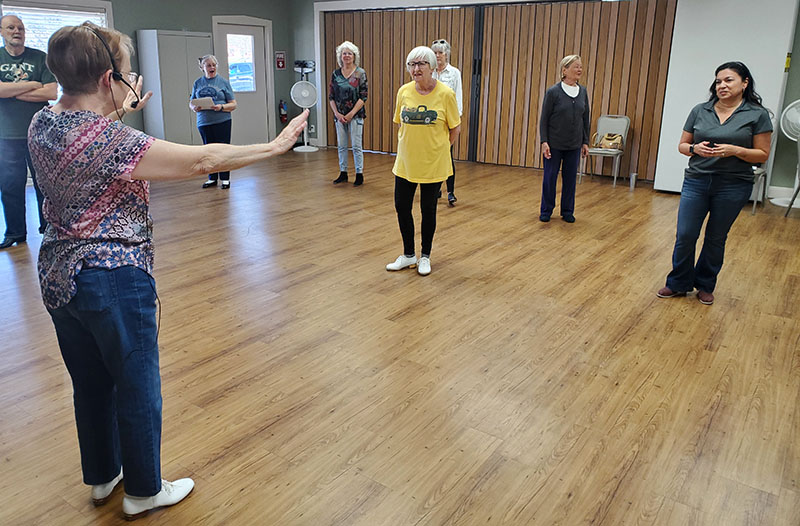
March 15, 2023–When I first came to Texas, I almost got sent back over the Red River.
It was at a club in San Antonio when I asked a native Texan where I might attend the ballet.
What followed was awkward silence and a stare that made me feel like I was in a saloon in a TV western just before bottles start flying. For context, I was at the time playing in a western band on the Texas dance hall circuit. Our fans were more about the cotton-eyed joe than a pas de deux.
I quickly learned to be circumspect about my interest in the finer forms of dance. The dirty secret, though, is that I’ve studied ballet, tap, jazz, modern, line, swing, square dance, and ballroom. Dance movement is something I’ve always been fascinated with, but never good enough at to make a living. So I went with writing, the only vocation less lucrative.
But there is one style of dance I’ve never figured out–clogging. You see, dance for me is like a language. I am obsessed with working out the steps, solving the mystery of each dance style. Dancing is simply learning a new language. Though I’ve spent many sessions stage-side squinting at the boots of clog dancers, I’ve never deciphered the taps, digs, and scuffs.
Until now. One day at random I bumped into Molly Martin, a clogging instructor I worked with back in my Club Ed days. She happened to mention she was still teaching classes at the Golden Hub in Fredericksburg and the Dietert Center in Kerrville. So I signed up, aches, ignorance, and all.
I know clogging is healthy, because Molly has been taking or teaching it for 25 years and she didn’t start until she was well-retired, so you can do the math. Yet she shames us students with her fitness, energy, and agility.
Molly embodies the benefits she ticks off:
“It’s physical, it’s aerobic, it keeps your brain sharp, it keeps your faculties active. You don’t have to have a partner, you can do it in front of your kitchen sink, or wherever you want to do it (I like practicing while standing in line at the bank). And it’s just part of our culture.”
I was sold. But I was curious why the others in my class were taking it. We come in all shapes, sizes, ages, and abilities. At least one has had a knee replacement, and another a leg replacement. Yet 15 of us show up every week, to stomp, slide, and shuffle off to Buffalo Gap.
One couple from Europe said they like to learn all styles of dance from the old countries. So is the appeal of clogging its “American-ness?”
“Actually,” they informed me, “We found out that clogging originated in Ireland.”
Another classmate answered, “I take it for the exercise mainly–just moving my feet around.”
That is actually profound. As we all age, it is important to “move our feet around,” with intent and aplomb.
I asked another novice clogger what she might say to someone considering the class, but who might be too scared.
“You know,” she said, “it’s that old thing ‘dance like nobody’s watching.’ Nobody.”
That is not an issue, as there is zero chance of any of us clogging in public.
But I plan to keep doing it behind closed doors (and in line at the bank). It might be the one dance that won’t get me kicked out of Texas.